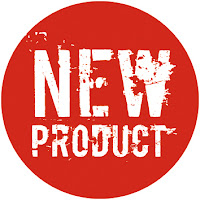skip to main |
skip to sidebar
By TEC President Harry S. Dennis, III, originally published in BizTimes.
It’s hard to believe that 2012 is just around the corner. The best word I would use to describe 2011 is tumultuous. Everything bad that could happen economically happened.
For small and medium-sized businesses, 2011 can best be described as unpredictable.
But businesses have endured because, for the past decade, they’ve learned to think about surviving first, and then about the good times that might lie ahead.
So this month, let’s take a look at the nuances for business planning next year and the variances we’ll be facing.
In statistical jargon, error variances explain the strangest things: a missile that unexpectedly deviates off course, an aircraft that crashes because of an instrument deviation, an airbag that deploys without warning, and so on.
We have variances in our business planning, too. Here are tips on how to deal with them.
Sales projections
In the good old days, we were accustomed to talking about the 90/80/70 percent variance contingencies. The assumption was you began with a 100 percent optimistic sales plan.
If, after one quarter, it was obvious that you were overly optimistic, you would start working the 90 percent plan. You’d throttle back your cost-of-goods sold and net operating profit projections. Usually, plans for capital expenses would remain in place, but with “delay” written next to them.
If, after two quarters, it was clear that your projected revenues wouldn’t be greater than 80 percent of your plan, you’d cut back across the board on things such as capital expansion, hiring employees, new lease commitments and so on.
Once you determined that your company was unable to exceed a 70 percent annual revenue target, you might start laying off employees, possibly eliminating entire shifts if necessary. You needed to enforce extreme cash savings measures too.
The nuances or variances associated with 2012 almost guarantee that manufacturing and service firms will experience these roller coaster rides.
Why plan at all under these conditions, you ask? Because this is truly the new normal. As much as we despise it, it won’t end anytime soon. Being prepared is almost a myth, in fact.
Intra-business stability
On Dec. 23, 2010, Air Force Magazine reported, American troops in Kabul, Afghanistan, were in their usual high alert and conducting assault training exercises at city central.
The training was to create a sense of internal “business as usual” operational stability among the troops. Likewise, any business operating from a contingency plan can continue to train and retrain employees to meet the unexpected.
Any procedure that might fit under the rubric of standard operating procedure needs to be re-examined.
Business slowdowns present a great opportunity to take on projects that usually fall between the cracks during busy times. One of our favorite projects at TEC is work flow, especially computer-to-computer or network-to-network.
I’d place website upgrades into that category. Good websites are upgraded three to four times a year. When was the last time yours was upgraded?
Seizing global opportunities
For the past year, the stock market has been reminding us in knee-jerk fashion that the effects of global events, primarily those dealing with the economy and banks in European countries, are so severe that they may as well be happening to our next door neighbor.
But dismal global reports are offset by continuing super strides in countries like China, India and, most prominently, Brazil. The challenge to the United States is how to let smaller businesses claim a piece of these growing pies. This is one solution to abating the 90/80/70 percent revenue syndrome.
Something more than determination is really needed. When I hear a company say, “We’re just a regional business and don’t have the wherewithal to go elsewhere,” it reminds me of a former TEC company that made the move quite successfully.
At the time, they were in the phone booth and telephone enclosure business, serving Ma Bell for the most part. Due to the onslaught of cell technology, phone booths became dinosaurs almost overnight. With perseverance, the company opened up Third World markets in places such as India, Indonesia, the Caribbean and Eastern Europe.
Net result? The business was saved. You might recognize the company’s name: Fortec.
Bring it on
It used to be that the only two things we could really count on were death and taxes. I think we can safely add a third one: the world of business nuance as seen in a string of unexpected variances.
Until next month, and a new calendar year, may these nuances work for you, not against you.
By TEC President Harry S. Dennis, III, originally published in BizTimes.
Some of us will still be in management positions in 2021.
That means that, right now, there are 12-year-olds in grade school who may be junior employees at your company in what seems like a few short years.
Here’s a quick primer to remind us where we were and where we are now. My thanks to TEC resource, Dr. Gustavo Grodnitzky, for this review.
The Silent Generation
This group was born between 1925 and 1945. Many have left the workforce. But many also have re-entered in part time or other vocational areas, simply to make ends meet in this economy.
Several of our TEC chairs and staff, including yours truly, fall into this category. We’re also called “rationalists.” We are loyalists and principled in our commitment to one company or one occupation during our careers. We’re not known as extreme risk-takers. We accept the pluses and minuses that any job has to offer. We’re good company role models, as well.
The Baby Boomers
Born between 1946 and 1964, they’re called boomers because so many were babies created after GIs returned from World War II. Boomers are driven to excel. They want steady job progression and the wealth and materialistic rewards that come with it. These folks introduced the idea of the 60- and 80-hour work weeks. They equate effort and time invested with their expectations of financial and material return.
Generation X
Xers were born between 1965 and 1981. Unlike the Boomers, they want work/life balance. They’re more focused on the productivity and efficiency required to get the job done in 40 hours or less. This gives them the balance to pursue interests outside of work, such as families, hobbies, a healthy lifestyle, and so on.
Generation Y
Yers were born between 1982 and 2000. They’re also known as Millennials, reflecting the symbolic change to the 21st Century. Unlike Xers who are preoccupied with work/life balance, Yers have trouble making the distinction between this semantic dichotomy. Instead, they prefer a blended lifestyle. In other words, they hold very close what they think is important in their work life. They equally value what’s important in their personal life. Yers are complex and more difficult to understand and manage than Xers and Boomers. You can see the differences here:
- Time. Grodnitzky talks about employers shifting from a traditional time-keeping methodology to a progressive one, which he describes as paid time off, or PTO. PTO replaces personal time, sick time and vacation time. Basically, it says to the Yer, “You are an adult. Use your time wisely and fairly so it doesn’t detract from your job responsibilities.”
- Flexibility. The close cousin of time is flexibility. And the close cousin of flexibility is pay that is tied to performance results, not a time clock. Pay for performance is catching on at a number of TEC companies. But most will tell you that having the right metrics in place to measure performance is critical. This means that whether a Yer is working in the office, on the road, or at home, you should expect the same performance results.
- Personal Growth. I have found that Yers have the highest quest for personal growth and knowledge among all the employee groups mentioned above. A savvy employer will give them opportunities to grow.
- Relationships. A Yer’s relationship with supervisors is critical to how long they stay at your company. Boomer supervisors, in particular, need training on how to relate to the Y generation.
- Cause. Yers are most effective when they can relate to and embrace causes. Your mission statement or vision or “why we do what we do” statements are places to begin. But the message must be meaningful, short, to the point and engaging. Otherwise, Yers won’t really care.
Generation Z and beyond
Next, we have Generation Z, sometimes defined as those born anywhere from the mid-1990s and early 2000s through to the present.
They’re raised on the Internet, adept at multi-tasking, able to sift through large amounts of information quickly and eager to share what they’ve found.
They, and the other generations before them, will make up the workplace a decade from now. Here’s what employees in our future workforce might look like:
- They will be a weighted composite of boomers, Xers, and Yers, with the Yers weighted the highest.
- Their speed of output will double from today’s standard.
- Marriage and children will not be a significant goal for them.
- Mobility coupled with job stimulation will be a high priority.
- They will have an Internet business in addition to their primary vocation.
- They will show fierce independence, but exceptional work pride, with multi-talent capabilities.
That’s the view, a decade from now. Until next month, what else do you see?
You and your team have been working hard all year. First quarter, second quarter, third quarter, and now rounding towards – a holiday party? Even if the holidays are your favorite time of year, it’s hard not to worry that productivity could be sidetracked by distractions during 4th quarter. So how can we get the numbers where we need them without turning into Scrooge?
Checking it twice: Start by assuring that your Human Resources department has sent out a list of your company holidays and time-off policy well ahead of time. You may want to suggest a deadline when all requests need to be in order to be considered for priority.
 All is calm: All is calm: Have your Project Management team conduct more resource planning check-ins and detailed time-off calendars to assure your planned work is covered. Since distractions and time-offs during this time of year are a given, build some extra time into each project. Be sure to include any of your holiday parties into the work schedule, too.
Shake the tree: Your Sales team should follow up with prospects one more time to see if any year-end sales can be added. A sales challenge with a respectable prize can be tied in with your holiday theme. Don’t forget that some clients may have annual budgets to use or lose. Propose concepts that bring some last minute value and lead to more work in the new year.
Setting a jovial tone during the holidays can motivate your team to face year-end challenges with determination. Accept that some decline in productivity is a reality at many companies this time of year. Showing your teams gratitude, tolerance, and flexibility in the face of holiday time-off requests can make the hours they are at work as productive as ever. And proving that you are there to hold down the fort no matter what is a great way to remind your team that we still have a job to do.
Perhaps more than any time in history, the variety of communication tools at our disposal is greater than ever. As valuable as they have proven to be, when it comes to the electronic communication tools, all platforms are not created equal – nor were they meant to be treated as such. Here are a few considerations to keep in mind to keep the electronic channels of communication running smoothly.
 First and foremost, when establishing a relationship with a potential client, find out which communication method they prefer. If you’re not in the habit already, ask them when you share business cards. With existing clients, it’s best to reply in whichever method they use, unless for security reasons, it does not meet your company policy.
Similarly, at hire, be sure to let your employees know how you prefer to receive messages. In management positions, it is easy to spend critical hours of your day reading and replying to emails. As with paper correspondence, if you do not have enough time in the day to monitor and reply to your electronic inbox, have an assistant field and filter your incoming messages for you.
Texting: A short message might mean a short business relationship While useful at times, most of us know that texting is not a good way to conduct any serious conversations. Sure, it can be a great way to alert your team with a status update when you are offsite but for anything important, ask yourself if an email wouldn’t be better. If a client requests that you message them, it’s best to start the text by asking if they are available to IM at that moment. And mind the spellcheck – sometimes your smartphone can do some not-so-smart things with your intended words.
Email: If it’s good enough for the Queen Queen Elizabeth was the first head of state to send an email way back in 1976. Since then, email has replaced the majority of business communication that goes on in almost every office. It’s reputation as a good way to conduct business has changed from a novelty to a necessity. When is the last time someone told you they didn’t have an email address? As a CEO, you should draft your emails to clients in the same way you would a typed letter, letterhead, signature and all. Or, if you wish to send an even more formal message, attach a PDF of your electronic letter. Email continues to be a great way to establish a time-stamped electronic papertrail, as well as a great data storage service.
Telephone: Still a valid way to ring up a few more sales In some offices, the ring of a phone is nearly extinct, in favor of email. Yet there are scenarios where nothing can express your personality like a phone call or video-conference. Your tone can easily get lost in email, and often times, that is the only way your authenticity can truly come through. Not only is your tone more clear, the tone and reaction of your client is more apparent. If you are gifted in the art of conversation, you can learn a lot about your client’s comfort level just by listening. Of course, if the situation is delicate, nothing beats a face-to-face conversation.
Depending on the tech savvy-ness of your business, you probably have a sense of which messages are best suited for which technology. Company guidelines have probably morphed over the years, and often times a CEO will be the one who sets the standard.
Take note of how the business communications of your team are being delivered. Are your employees sending abrupt text message to an important lead? Is an eco-conscious client being sent paper invoices? Maybe it’s time to review your own practices and set some new ground rules. Year-end might be a good time to revisit your communication methods with your clients and coworkers.
“I messed up,” began Netflix CEO Reed Hastings in a September 18th blog post and email to customers. Such a straightforward and personal acceptance of responsibility should have set the tone for an apology that would make it easy for customers to forgive and forget, so why did it only fuel a backlash against his company?
As you likely know by now, Hastings was not apologizing for raising prices and complicating things for his customers by separating DVD rental and streaming services. No, he apologized for the way the company mishandled the way they broke the news. “It is clear from the feedback over the past two months that many members felt we lacked respect and humility in the way we announced the separation of DVD and streaming, and the price changes,” the post continued. “That was certainly not our intent, and I offer my sincere apology.”
Hastings went on to announce even more changes, separating the services into two companies with two pay structures, demonstrating that he clearly hadn’t heard any of the original concerns. He even seemed to poke fun at the fact that they had raised prices instead of confronting it head on, creating an even wider chasm in appearing not to take concerns seriously.
But what could he have done differently? Public apologies are never easy, but could he have done better? Here are some things we can learn from Hastings’ ordeal, should we ever find ourselves in a similar unenviable position.
- Be authentic – Hastings’ apology was hardly clear or unambiguous, making it much less effective. A direct response to customer concerns is the only way to make it clear you mean what you say, and the only way to avoid further apologies to clarify your statements.
- Respond immediately – Netflix announced their plans to increase rates on July 12th, and Hastings’ half-hearted apology came September 18th. As the immediate onslaught of 5,000+ comments in response to his blog post will attest, his mea culpa could have come earlier. The lag time made it appear his hand was finally forced.
- Be personal – Hastings could certainly have appeared more contrite if he had looked his customers in the eye in a press conference, and invited questions. Instead, he pushed out an unexpected and faceless email with carefully constructed language, and engaged in no immediate Q&A.
- Be humble – Hastings titled his post, “An Explanation and Some Reflections”, which immediately strikes a defensive tone. “An Apology and Some Reconsiderations” may have gone further to win back the hearts of those he may have alienated. He declared many new changes to be “necessary”, which implies his audience feel as if they have no voice (and has since gone back on some of the company’s major plans, now demonstrating that they were never necessitated in the first place).
As is the case with any CEO, Hastings is free to run his company as he sees fit, and his customers and stakeholders will decide how he’s doing. But we can all learn some lessons when facing up to our mistakes, no matter how public or private. It will help us personally, and help the company maintain credibility long-term.
It’s tempting to dismiss clichés such as, “actions speak louder than words”, but in a leadership role, it’s vital to understand that your personal and corporate behavior will influence your entire organization.
 Now, we’re not going to state the obvious about engaging in illegal or inappropriate activities that will put the company at risk. The behavior we want to focus on here is more subtle. We’re not telling you to change your lifestyle, just to remain aware that small things can make a big difference in the way you influence group behavior.
As a leader, you want and expect the respect of those around you. With that respect comes responsibility, as those who look to you for behavioral signals will – naturally – follow your lead.
- Do you expect your employees to remain positive, excited to be at work? Then you must appear positive and excited by way of motivation.
- What are your values as a company? The words that you want others to use when describing your company should also describe the way you conduct your daily business.
- Are you actively involved in the daily business of all departments? Don’t micromanage, but remain available and communicate openly, transparently.
- What do you want your company to have their sights set on? Make sure you are focusing on that same goal in your own work.
It’s the golden rule: Do unto others as you would have them do unto you. The way you perform and the expectations you have of the group are vital to the culture of your organization. Make sure to meet or exceed the expectations you place on others’ performance.
Remember, people are watching. Yes, part of leadership is about making decisions for the company, but you can also help individuals make positive decisions by managing your own words and behavior for a positive outcome.
Actions DO speak louder than words, so show – don’t just tell.
The rate at which technology and media platforms are evolving is increasing to the point where it’s a full time job just to keep up on trends and new offerings. With all the hype that comes with launch after launch of next-gen hardware and functionality, how do you filter out the noise and know what truly is the next big thing? More importantly, how do you know if it’s right for your business?
 It’s called Shiny Object Syndrome. It takes your eye off the ball, and distracts you from what’s important. And we’re all guilty of it from time to time. We never lose that desire to be the first kid on the block with that cool new toy, so it’s tempting to give in to the hype and thrill of discovery. But what if something bigger and better comes along tomorrow? It’s vital to your success that you’re able to know what’s right for you.
How can you stay immune to Shiny Object Syndrome? Of course, there’s no vaccine, but these steps will help take a measured approach to jumping on the latest and greatest.
Take a deep breath. Don’t make any immediate decisions. The initial hype that comes with any launch is overwhelming, and that’s what the marketers are counting on. Complete some things on your to-do list. They might not be as exciting, but you’ll feel better about what you’re already doing once you see them through.
Seek advice. You’re not in this alone. Consult your board, or ask any of the tech savvy people you’ve hired for their expertise. They’ll keep you focused on your company’s business priorities, and will be able to tell you if you’re going to be derailed.
How much will it cost? There’s a learning curve that comes with any new technology or product. Do you have the manpower and monetary cushion to dedicate? Will it pay off in the end?
Keep it simple. If this is the right solution for your business, it won’t over-complicate things. If it’s not simple, you might find your workforce and your customers frustrated and overwhelmed.
It’s good to keep your eyes on the shifting landscape to look for new opportunities. And your company won’t get very far if you’re not willing to try new things and take the occasional risk. But stay focused. Newness wears off. And if something has staying power, it won’t matter that your company was the first to get there. It only matters that you are the company that makes the best use of the product or offering in a way that makes the most sense.
In our culture, nepotism in the workplace is generally viewed negatively, often with good reason. Hiring a friend or relative is fraught with pitfalls that can affect many important aspects of your business. But can it ever work?
Tread lightly
Let’s begin by exploring some serious consequences that can arise when your company hires a new employee to work with a personal connection to someone in a position of influence.
• Morale: We live in a meritocracy where most of us expect hard work, loyalty, and talent to be rewarded. So it’s no surprise that there is resentment and a decline in productivity when it’s perceived someone got ahead without paying their dues.  • Unqualified leaders: Important positions may well be held by someone who isn’t ready to lead. This will ultimately become a barrier to success. It also affects your ability to attract top talent, retain your best people, and have a diversity of perspectives.
• Drama: Nepotism can be just plain messy. The difficulties that happen outside the office can make their way into workplace dynamics. And if someone is underperforming, firing them will become awkward, to say the least. At worst, this can lead to discrimination and sexual harassment lawsuits.
What to do?
Sometimes nepotism is unavoidable, and even a positive, as is the case in towns where specific skills are at a premium. Smaller, family-owned businesses demonstrate how shared knowledge among likeminded individuals can help a business thrive. But how can you minimize its negative impact?
• Observe: Monitor workplace dynamics, and make sure all personal relationships are disclosed for transparency’s sake. Some companies ask employees to fill out an annual conflict-of-interest report to disclose all personal relationships and how they may have benefited.
• Accountability: Encourage those with the personal relationship to hold each other accountable. If he or she fails, it reflects poorly on both parties. As a result, often the beneficiary will work harder than anyone to prove themselves.
• Be prepared: From a Human Resources standpoint, make sure your company has an official policy on nepotism. Ask your HR specialists to keep up on all state and federal laws relating to the matter, and have a detailed plan of action to any potential problems.
Do what’s best
Nepotism isn’t a black-and-white issue. Perhaps it’s not the best idea, but common sense can make sure you don’t need to forbid it outright. In the end, the best policy is hiring the most qualified person for the job.
As leaders, we’ve all been asked to give honest feedback on others’ performance. Great leaders strive to inspire others to achieve their best. Performance evaluations are a time where you can provide valuable advice to help a team member improve. It is best to have regular meetings with your team to discuss these areas outside of the formal process, but nonetheless, feedback is always valuable.
 However, when it comes to hearing feedback on your own performance, does your team have the same motivation to help you succeed or are they afraid of saying something negative because you’re their boss? How can you be sure you’re getting honest feedback? How can you take the reviews you are given and dive deeper into concrete advice?
Begin with a self-evaluation and objectively analyze your own achievements and mistakes. You are your hardest critic so identifying areas you know you want to improve can be a starting point when reading evaluations.
Strive to find peers to evaluate you. While it’s important to hear from those you manage, they might not always be honest for fear of losing their job. Look to your board of directors and managers of other departments. While your work with them might be less intensive, they understand the type of feedback required of someone at your level.
If there is no other executive peer to help you receive feedback, ask clients or other TEC members to weigh in on the professional qualities that they have seen in you. They may have advice on whom to go to within your organization for help.
What is the most important piece of feedback you’ve ever received? In your experience, does your personal feedback get more descriptive or more vague as you move up in leadership?
Whether you are growing a small business or downsizing a large firm, the decision to hire an independent contractor over a full time employee can sometimes be a tough decision. Each case has its pluses and minuses, but you can help serve your immediate goals, as well as your long term ones, by weighing these considerations.
Loyalty There's a lot to be said for the commitment you can get from a full time employee. By bringing someone on board full time, you're getting a dedicated player on your team only. Would you trust a freelancer with your secret recipe? Probably not, but you might hire one to do the cooking. Independent contractors rarely work for just one company, so there are always levels of confidentiality to be considered.
FlexibilityIf you are looking for someone to fill a role within a limited timeframe, an independent contractor can be ideal. At the same time, a contractor may come with some constraints of their own, especially in regards to their hours and availability. What about flexibility in skill set? Since contractors are by name contracted to perform a specialized skill, they may not be able to jump in and multi-task in other departments as readily as your long term employees. But in many cases, that is not a deal-breaker.
ResponsibilityClearly, any new hire can be an expensive undertaking. The pros you can get from a permanent team member are often counterbalanced by the cons: the cost of benefits and overhead. In many ways, hiring a full time employee feels like a partnership, whereas your relationship with a contractor is more of a business agreement. You may feel more sense of responsibility towards an employee as a provider. In turn, they may feel more responsible for the success of your company. The importance you place on an employee’s sense of personal investment in your company may be key in helping you decide.
Whether you are looking for a way to cut costs or are merely in need of temporary resources, knowing when to hire an independent contractor over an employee can streamline your operations. Sometimes the line between the two can be gray, so be sure to know the difference in these classifications when you hire, as interest and tax penalties apply.
What are the questions you ask yourself when deciding between an independent contractors and a permanent employee?
Last week we discussed that with the shift in color on the leaves comes the time to address how to overcome resistance to change in your organization. Our most recent TEC Senior Managers’ Program lent insight into just that by understanding how to lead your employees through organizational changes.
How do organizations decide what changes are necessary in the first place? Just like with any decision we make in our daily lives, the process begins with gathering all relevant information, weighing the pros and cons and analyzing where opportunities and risks lie. Once that is complete, an educated decision can be made.
When making decisions on behalf of an organization, the variables and stakes are greater. So how do you begin to gather and stay current with all the pertinent information when it involves an entire organization or industry? Market research. Conducting regular, and specific, market research is vital to the growth and success of your business.
As stated in an article on The Business Plan website, without market research, it’s like packing for a trip without checking the weather conditions at your destination. The article also shares specific decisions that market research helps, including:
- Whether or not to enter a market
- Whether or not to launch a new product
- Whether to continue with a service based on customer satisfaction
- Compare the sales performance of your product to your competitors
For the full list, click here.
How have you used market research to make a critical business decision? Do you put more weight on some aspects of market research than others?
 |
| Photo:http://flic.kr/p/443iPE |
Fall is a time where your senses are on overload -- the leaves begin to turn, the air becomes brisk, and the afternoon sun disappears more quickly. With your surroundings rapidly changing, your mind is forced to reflect on other revolving aspects of your life. Whether it’s how fast time has flown this summer or planning for company changes ahead, fall is a time to reflect on change.
However, oftentimes change overwhelms your employees. We learned from Dr. Jerry Jellison at the TEC Senior Managers’ Program how to effectively approach resistance to change, both at the individual and organizational level by using activation tools instead of persuasion. Tools to utilize include establishing open communication about change, tapping into your team’s creative skills to accelerate change, and establishing accountability to follow through on initiatives to complete change.
To begin the change implementation process and help your team overcome obstacles, reflect on a time when change was out of your control. Maybe it was moving somewhere new for school or work. Perhaps it was witnessing your company complete a merger or acquisition. Resistance to change is an emotional cliff. Taking time to think about what emotions are or will be present when change is on the horizon, will help you avoid the many ways leaders inadvertently create resistance to change. Taking a step back will also help build the trust of your team while you all go through a major transition.
How do you help your team overcome resistance to change? In your experience, what strategies work the best to facilitate seamless transitions?
By Harry Dennis for BizTimes Milwaukee
You’re the owner or senior manager of a small- to medium-sized privately-held business. One day, an employee asks you:
- What are our annual revenues?
- What are our gross profits?
- What are our operating profits?
- How much does the owner take out?
Oops. Are you ready for this? Do you have a company policy regarding financial disclosure?
This month, I’ll explain the pros and cons, and then leave the decision up to you. Among our TEC members, the pendulum swings from one end to the other on this issue. Here are some examples:
- “We have been a ‘closed” company for 100 years. The family has never shared anything outside the family.”
- “We have a gain-sharing program in place. Our employees know our operating expenses and profits, and we share with them at that level.”
- “I share everything. Why shouldn’t I? Our employees know I took a great risk buying the assets of this company when it went belly-up with the prior owner.”
- “We share selectively on a ‘who should know’ basis. Everyone gets some information. No one gets all the information.”
Advantages of sharing information
First and foremost, it’s an issue of trust. The more you disclose in terms of financial performance, then the less likely that employees will complain that they always end up on the short end of the stick when it comes to raises or benefits, or especially employee concessions.
Second, it’s an issue of simply being informed. Every employee survey I’ve ever seen done by TEC members over the last 38 years always gets the same answer to the question, “How well do you think your company keeps you informed about its performance?”
Employees thirst for knowledge about your company. I hate to be the purveyor of bad news. But your e-mails, tweets and newsletters, in whatever form, do not get the job done. Disclosure, in face-to-face meetings with employees, is the answer, if you truly want your employees to feel that they’re informed.
Third, there are counterproductive rumors whether you have 15 employees or 500. The less employees know about financial performance the last quarter, the more they will fill in the blanks. Rumor always emphasizes the negative, not the positive.
Don’t kid yourself. Rumors affect morale and productivity. It’s like a bad infection. And it isn’t good for business. Disclosure squelches rumors and replaces them with facts, whether the news is good or bad.
The disadvantages
First, opening Pandora’s Box may confuse employees. Disclosure companies invest valuable time helping employees understand what the numbers mean – not just lines on computer graphs. There’s no point about talking gross profit results for the past 30 days if an employee has no clue about what gross profit means.
If you don’t handle the education process correctly, it leads to comments like, “They’re just trying to pull the wool over our eyes.”
Second, the issue is complicated if your company has a union. Your contract might address issues such as disclosure. The union might even have the right to approve or disapprove of financial disclosures not covered in the contract.
Third, in some companies, the performance results are totally due to the result of outside influences, none of which can be affected by employee performance. This is especially true in pure commodity firms, because performance results are determined solely by market influence.
Finally, there’s the subtle issue of owner compensation, in whatever form it might take. My personal preference is to keep this out of the financial disclosure discussion, because each business owner has a different set of ownership circumstances.
In TEC, I know I’m speaking for many of our CEOs who would say that they would never extract more financial reward from their companies than justified.
I believe strongly that while the pendulum still swings from one end of the other regarding financial disclosure, very few of our TEC members favor complete non-disclosure.
Until next month, I hope you’re doing the right thing for yourself, your people and your business.
With today’s technology and the rapid increase of smart phone usage, there are many new tools available to help organize your work life. However, learning more about each of these new technologies that are available to us, and choosing the right one, can be an overwhelming (adventure).
Whether you’re a prolific mobile user or if you’re just looking for the right tool to help you organize your workflow process, we’ve organized a listing of a few of the most popular applications for busy business professionals.
 |
| Photo: http://flic.kr/p/7ykQ19 |
Important Information StorageOne headache often encountered at work is having too many documents in too many different places. Whether you have files stored on your desktop, notes scribbled on napkins, or a briefcase overflowing with papers – quickly finding what you need can be challenging. Tools like Evernote and Dropbox store your important documents (files, photos, to-do lists, etc.), make them searchable and best of all, easily accessible wherever you are – and from any mobile device or computer.
Mobile CommunicationsFor the traveling business professional, email isn’t always the ideal form of communication. For example, when trying to coordinate with your team in real-time, such as meeting up with a group at a conference, you might find value in a group text application. GroupMe helps you work more efficiently than sifting through otherwise lengthy threads of emails. If you’re out of the office a lot, it’s important to maintain that face-to-face contact with your team and clients around the globe. Skype offers features like group video calling, group screen sharing and file sharing, so that business can resume as usual when you’re not physically present.
Contact Lists and Relationship ManagementToday, your professional contacts aren’t just on a business card in a Rolodex on your desk. They are in your email lists, your social networks and your mobile phone – all of which cross paths with your personal contacts. Losing track of an important email or a text message at work is unacceptable. Tools like Gist and Xobni help you categorize your contacts and keep your messages from all platforms in one place. Available in beta for Android mobile devices, the hot app is Meshin, an information communications application that makes you even more productive by unifying your email, texts, phone calls, and social messages into a single, intuitive interface.
What do you struggle with organizationally? What tools are you currently using the most to help keep your work life in order?
TEC is thrilled to host Dr. Jerry Jellison at the 4th session of the 2011 TEC Senior Managers’ Program. Using the J Curve model of change that he developed, Jellison will present “Overcoming Resistance to Change” and explain how senior managers and leaders can accelerate the change process. By understanding people’s thoughts and feelings at each of the five stages of the J Curve, it is possible to help people over the emotional cliff that produces resistance.
In this session, TEC members and guests will discover techniques to:
• Understand the human dynamics of change at the 5 stages of the J Curve
• Build the trust of your team to go through a major implementation
• Create realistic and positive expectations for the change process
• Establish a common language for discussing change
• Avoid the limits of persuasion and start using activation influence tools
• And many more tools to build enthusiasm for continual change
Sessions will be held the following dates and locations:
September 13, 2011 in Milwaukee, Wisconsin
September 14, 2011 in Appleton, Wisconsin
October 19, 2011 in Grand Rapids, Michigan
To learn more about this event and how to register, please contact:
Rita Rehlinger at:
rita@tecmidwest.com
262-821-3340
 It’s that time of year again – back to school time. A time when everything changes, the leaves, your schedule, your routine, and a sense of excitement and enthusiasm generates for what lies ahead.
How can we maintain that feeling and incorporate into our daily work life?
Make time for learning. We can get so wrapped up in our work that we sometimes put our professional development and growth second. One way to be proactive is to make a commitment to seek out and read industry news and leadership books. Another way is through professional groups. TEC members are held accountable, by mentors and group members, to continually share knowledge that promotes individual growth and benefits the group as a whole.
Analyze academically. Often times we rely on our experience and working knowledge as the supporting elements for leadership decisions. Alter your thinking to an academic approach to ignite healthy debate and idea share: Propose a thesis, supply supporting evidence, defend against questioning from others.
Start a classroom. Talk to your human resources team for opportunity to literally study. Find out what is available to you and your team such as lunch and learns, webinars, conferences and conventions.
How do you promote active learning in your organization? What is the most difficult aspect in maintaining professional growth and development?
 |
| Photo: http://flic.kr/p/5dfN2X |
As members and leaders of TEC, we understand the value our people and relationships, whether it’s between a TEC member and a Chair or a CEO and his/her employees, play in our personal and business success. Through our mentoring program and one-on-one sessions, we give leaders the tools they need to inspire others because with passionate employees, organizations thrive.
As Labor Day approaches, it is important to celebrate your largest asset – your employees. While sometimes thought of as the last hurrah of the summer, there are ways to make this Labor Day mean more for you and your team.
Reflect. When the kids return to school this year many will be asked to write the tradition “What I did this summer” paper. Why not make this a writing assignment for your company newsletter? Vacation stories and family photos are great reminders of what we all work so hard for all year long.
Reward. As you reflect back on your summer, Labor Day is a great time to assess the year-to-date in general. Words of encouragement to your team members this month can set the tone for your whole fourth quarter. Who has made great strides so far this year? Be sure to let them know. Anything from a small gift to a bonus day is a nice gesture to those who may have had to put extra hours in during the summer months to cover employees out on vacation.
Regroup. September can be the perfect time to set year-end goals and finish the year strong. Creating a fourth-quarter challenge, small or large, is great way to build momentum heading into fall. Invite your team to a discovery session to set any last year-end strategies, goals and objectives to encourage full participation and an “all-in” mentality.
How do you celebrate your employees? What do you do to fire up your team for fall?
 One of the ways TEC promotes the growth of its members is with high-caliber inspirational speakers. From regular TEC group meetings to the annual Inspirational Leadership event, TEC provides ample opportunities to network and learn from inspiring leaders from across the nation.
Following these events, TEC members return to their organizations with new insights, ideas and passions. However, sometimes it is difficult to translate everything you’ve learned to your employees and the post-event excitement can fizzle out in a matter of days without implementing or sharing any initial ideas.
Below are a few ways to help you get the most out of inspirational speaking events.
Invite a friend. Whether it’s another member of your organization or a mentor, hearing from an inspirational speaker with someone who is familiar with you and your company will allow you to share ideas and receive personalized feedback. Schedule a check-in with your guest in the weeks following the presentation to digest the information and help hold yourself accountable to implementing any initial ideas.
Write it down. Taking notes during a presentation is valuable to trigger your thoughts later. Revisit your notes shortly after the event and organize your thoughts while they’re still fresh in your mind. Share your notes and insights with your team in an informal meeting or written summary to evaluate which points resonate with them to encourage team participation and adoption of new changes.
In your experience, what strategies have succeeded to get the most out of a keynote speaker? How do you maintain your passion and excitement following an event?
 |
| Photo: http://flic.kr/p/4qAhiw |
Whether you’re a small business owner or the CEO of a large corporation, you understand the key to outselling the competition and satisfying your customer is with a high quality product. Especially in today’s economy, consumers and companies are tightening their wallets yet still expect the same level of quality and customer service. While the product is what they buy, a strong relationship and personal connection with people is what keeps them from shopping around.
As leaders, you must recognize this and provide your employees with the tools necessary to build bonds with and maintain your customers.
Create community and trust. When employees identify themselves with your company, they make great brand ambassadors that share a glimpse of your company’s culture and values with each person they meet. To foster this positive perception, work to hire employees who have both the needed professional experience and possess values similar to that of your company.
Share information across all disciplines. Each one of your employees is the face of your organization, not just the sales team, and each has the opportunity and capability to go the extra mile to build external relationships. You never know whom your employees will meet in their daily life and your next referral could come from anyone, in any department. Equip everyone in your organization with the tools they need to accurately describe and “sell” your services by providing company updates to all employees via regular meetings or an internal newsletter.
How have you added to your employee’s tool kit so they can better represent your organization? What is the most challenging aspect of creating employee brand ambassadors?
 |
| Photo: http://flic.kr/p/69xpq3 |
As members of TEC, leaders are exposed to best practices in business, utilize work and personal experience to mentor others and gain valuable insights in order to inspire others. TEC members and Chairs invest their time developing these skills so their organizations and groups can succeed.
But what really makes a team successful? Newseek Magazine states very simply that winning teams win because they have the best players and a coach who knows how to make the sum greater than the parts. Seems easy enough. Using this simple sports analogy, and considering a few of the points shared in the article, below are three important aspects to build a winning team.
Pick your roster. While its high-scoring talent may categorize a successful team, if the individual’s personality doesn’t mesh well with the team, it’s a recipe for disaster. As a leader, you must recognize that no matter how much experience you have mentoring others or how much personal time you invest in an individual’s development, you can’t change behavior and personality. Evaluate each team member and choose those that align best with your company’s values and culture over those with the most experience.
Share your playbook. On a sports team, each member knows exactly what their position is and what they’re responsible for. It is important to let your team members know where they stand and what they need to work on to ensure the team succeeds. Also, make sure your game plan is transparent. By knowing and understanding the competition, your vision for the future, or your weakness in the marketplace, your team members will have a greater sense of how their individual efforts impact the larger picture.
Foster trust. On the court, if a team doesn’t trust each other, players are hesitant, afraid to make mistakes and don’t perform to their full potential. It’s the same in the workplace. Trust between a team creates an environment of idea sharing, risk taking and innovation because team members feel confident their ideas are supported. The first step in creating trust within a team begins with an honest leader. By being sincere in your communications, your team will learn to communicate honestly with each other. Continue to build up trust by celebrating successes often and acknowledge what and who worked well to promote continued success.
What is the first thing you consider when building your team? In your experience, what coaching techniques have helped, or hindered, your team’s achievements?
 |
| Photo: http://flic.kr/p/8tt4za |
In last week's blog post we discussed how to prepare for higher positions within your organization and how it affects those around you. The same can be said when leaving a position of leadership.
There are many factors to think about when deciding to leave a company. Whether it’s for relocation, a greater opportunity or a better fit, quitting your job is about what’s best for you and your career. However, others are obviously affected.
Before you make the big announcement, there are necessary steps to take to ensure your transition out is seamless for those around you.
Stay positive. As a leader, you are looked up to in your organization. A positive attitude is just as important before your announcement as afterward. If your behavior is obviously different in the weeks and months leading up to your leave, your team will notice. Following the news, your colleagues will want to know details about the decision. It is best to keep it brief and speak positively of the opportunity.
Lead the transition. Be proactive in finding a replacement whether it’s working with your internal team or assisting with the hiring process. Share as much information, documents, tips and tricks as you can with your team so that they can efficiently carry out the work instead of overwhelming them after you leave.
Maintain relationships. Strong business relationships are critical to a strong leader. While it can be difficult to see the long term in an uncomfortable or difficult parting situation, avoid portraying any negative emotions or feedback. After you leave, those you worked keep in touch with closely with and managed. You can still be a mentor to others and may even offer a better perspective when not directly affiliated with the same company.
Leaving any position is difficult to do and when in a position of leadership, your actions are monitored more carefully. What is a mistake you’ve seen leaders do when leaving? In your experience, what is the most important thing to keep in mind?
 In a recent article about Proctor & Gamble’s “Build from Within” program, it describes that succession planning is built into the company’s culture by methodically tracking and measuring the development of its leaders. Not a small feat for a company of more than 125,000 employees.
No matter how large or small the organization, succession planning is a key element in the success of a future CEO. While your company’s executive board plans for its next leader, you should prepare yourself for the top at the same time. Below are a few tips to help an inside leader take the wheel with grace.
Prepare for the Role
As an inside hire, you already have access as to what works at your company and how to best fit into the CEO role. Be proactive in gaining the experience necessary to prove you’re the best fit. Utilize the support of your mentors and seek opportunities, such as projects that broaden your scope of duties, so that when the time comes to fill a vacancy, your skill set will come to mind. Putting a transition plan down on paper ahead of time will help you check off new responsibilities you want to add to your resume.
Define the Boundaries
When you accept a promotion to CEO, some of your old team members may continue to come to you with old duties. Be sure to set clear boundaries between where your old responsibilities end and your new ones begin. Use guided direction (or just hit the “forward” button) to re-route any communications that are misappropriated to your desk. Be mindful now that your words carry more authority and take extra precautions in your communications immediately after your promotion. Remember, your responsibilities have changed but your relationships are still valuable.
Set Limits
With any new position of leadership, there may be things you would like to tweak to improve a process or idea. Take it slow and think strategically about the best way to make improvements over the long term. Similarly, with a new set of expectations being placed upon you, it may be hard as a CEO to feel as if you can ever truly leave your work at the office. Even though this is often the reality, there are daily things you can do, like structure your calendar to incorporate downtime, to ease into your new position.
What challenges have you faced entering a new position of leadership? What is your advice to future leaders preparing to continue your company’s success?
By Harry Dennis for BizTimes Milwaukee
This month I’d like to take on a significant subject: the advantage of hiring veterans.
I don’t have the actual number of vets employed within the salaried and hourly ranks in Wisconsin. But including Vietnam, Iraq and Afghanistan, I think it’s reasonable to assume the number is well into the thousands.
I’m a Vietnam vet, having served as an Air Force combat pilot there for 18 consecutive months. My life was forever changed by the experience, and I’m sure this is true for any vet who has served our country, regardless of which conflict they were participating in.
Here’s what you can expect if you hire a vet or someone who is serving in the National Guard or military reserves.
Team orientation
Your vet employees are highly trained to be team players, especially team players who, while on duty, lived under constant stress and periodic distress. As such, they rely on strong and decisive leadership, especially leadership that demands results and consistent performance from employees, without a hint of favoritism.
Many vets will tell you that they respected their military leadership, but didn’t necessarily like them. To them, the definition of respect translates to perceived trust and competence in the leader.
The issue of liking has been studied by the leadership experts for 50 years. They generally conclude that being liked isn’t the same as being an effective leader.
The typical vet is accustomed to an indisputable bond with fellow team members. In a conflict, their life is dependent upon the success of this bond. Each team player is expected to perform flawlessly. “I’ve got your backside” or “I’ve got you covered” more or less says it all.
In business, we know that team play is the best play, but we also know that our players are not all capable of playing equally. Hence, they need constant training, coaching and personal development to reach this goal.
The vets I have talked to, especially those in the management ranks, find this to be one of their greatest frustrations and a huge source of personal impatience. Their frustration and impatience turns to dislike and distrust, and they avoid employees who they think aren’t pulling their share of the load. This is where a strong leader can intervene to right the ship.
Personal characteristics
Vets, as a whole, are very proud – proud of their contributions, proud of the branch of the military in which they served, and proud of their country. They support our Constitution and never hesitate to say, “one nation under God.”
They’re taught to be physically and mentally strong, and to follow the rules. There are few mavericks among the vets I’ve known over the years. As an employee, they’re loyal and tenacious, and incredibly consistent.
They’re accustomed to doing much with so little. They are survival-oriented, and prize the tools they are given to accomplish objectives.
Training
While in the military, vets are heavily involved in training and personal improvement programs, even in combat environments. Maintaining proficiency and personal skill levels is a primary requirement of anyone serving in our military.
So you can expect the vets you employ to be positively responsive to the training and development opportunities you provide them. And they will use it to the benefit of your company. TEC members who are vets make it clear to us that if they can’t get usable take-home value from TEC, they won’t stick around.
Accountability for results
In the military service, we have it ingrained in us that we’re accountable for the results that we or our team achieves. Each branch has its own way of doing it, and that is commonly known as “efficiency ratings.”
In business, we call it a performance evaluation or job review. To your vet, this is nothing new. It’s considered part of the job. It’s the measure of accountability for them. So you can expect them to be responsive and appreciate the feedback.
Most significantly, vets respond positively to recognition for their accomplishments. Not surprisingly, personal recognition is just as important as team recognition.
A final thought
If you haven’t yet hired a vet, I sincerely hope you’ll consider it when a job opening occurs. You won’t be sorry. I promise.
Until next month, thanks to our vets – for all they have given us, and for all we can expect from them in the future.
We all know that social networking on Facebook can bring new business to your door, but how can it positively impact what happens behind company doors? While it depends on the rules and regulations at your company, many employers encourage social networking as a means of building team morale and sharing ideas.
To friend or not to friend?
The decision to invite a coworker to be your Facebook friend depends in large part on your existing work relationship. Most advise against having members of management initiate the online connections, primarily to avoid any implied pressure coming from above. Also, since the information shared on Facebook is often highly personal, an employee could feel that their religious or political views are up for scrutiny if a member of the management requests access. This may even lead to feelings that they are being discriminated against down the road, if health issues or other personal challenges are made known. It might be best to make mention that you are a Facebook user but then let your employees choose to do the inviting.
Set the tone.
As when addressing any large group, employers need to be very conscious of their written voice when posting to Facebook. Expect that anyone from your grandmother, to your college buddies, to a potential client could be reading your posts, and sometimes joking or sarcasm can be lost in translation (we've all heard the horror stories). Keep your message crystal clear to avoid any miscommunication. If you hesitate even for a moment about posting something, you have your answer.
Fine tune your settings.
Since your personal and business worlds can collide on Facebook, make sure you and your employees are familiar with privacy settings. Now that nearly everyone is armed with a camera and a comment, the opportunity for a social gaffe reaches far beyond an awkward joke at the holiday party. While some blurring of the lines can be a good thing, by customizing your share settings, you can maintain a better separation between your business and personal life.
Share well with others.
When in doubt, it may be best to stick to the old stand-by "friendly but not familiar" when it comes to online information you share with employees. Also, employers should be mindful of posting anything that may come off as extravagant or self-absorbed. Even though your golf trip was hard earned, posting photos from the green while others are on a tight deadline or budget is ill advised.
With all of these considerations, is it really a good thing to foster an online relationship with your employees? Many say "absolutely!” If your company has a social media policy, Facebook is a good window into how well your employees adhere to company standards. It's also a great way to find commonalities between you and your staff. Use Facebook as an opportunity to solidify your position as a leader, with posts that enlighten your employees and inspire your clients. The more generous you are with truly useful information the more others will continue to rely on your authority.
Are you Facebook friends with your coworkers and employees? Tell us what kind of impact it has had on your work relationships.
 |
| http://flic.kr/p/5Gr9Cm |
The word "cloud" originated from the Old English word "clud," because of the way a cloud can sometimes resemble a pile of rocks. Perhaps this is how some feel about the term cloud computing. But does moving your business computing to the cloud involve more than merely stockpiling your data in one spot on the internet?
Utilizing the cloud is less about weighing you down and more about having data such as files, presentations, calendars and contacts float along with you, from your laptop to your smartphone to your iPad.
Some compare the evolution of cloud computing to other public utilities. In the same way we no longer need to store our own water or fuel for the winter, we no longer need to use our computers as an electronic storage device. Instead, we can save our data online in a centralized place, ready to use when and how we need it.
While you may not be using the cloud at your organization yet, chances are that you use it in your personal life. If you use an online service to pay your bills, store your contacts, or share your photos, you are already a cloud dweller. It's the same concept, only as it applies to the often complex aggregation of your business data.
So, what aspects of the cloud may be most valuable to the corporate world?
Collaboration
Anyone from potential clients to key members of your team can view up to the minute reports on the cloud. With custom settings and permissions, they can edit reports and share critical data as changes occur. No cross platform worries; as long as they have an internet ready device, your user can access what you need them to. With your whole team in the loop, resourcing, sales and management tasks are streamlined.
Cost
Cloud computing can cut down on overhead, most obviously IT spending - eliminating the need for many hardware and software purchases, as well as other operational expenses. But the true value may show itself primarily in the efficiency and agility it can bring your teams.
Security
Even if your computer meets an untimely death, your data still lives on. In essence, it is like having one enormous super-computer at your beck and call. You do want to be sure, however, that you have a compliance structure in place so your business data is protected from any outside eyes.
When migrating data to the cloud, it is best to start slowly and in phases, before fully rolling out to your company. There are quite a few cloud computing systems to choose from that can impact your business in a variety of ways. It may not be a matter of which one is the best overall but which one is best for your specific needs. What cloud computing system options are most important to your company? Storage capacity? Or is the ability to sync more critical?
If you are already using the cloud at your organization, which systems have been working for you?
|























